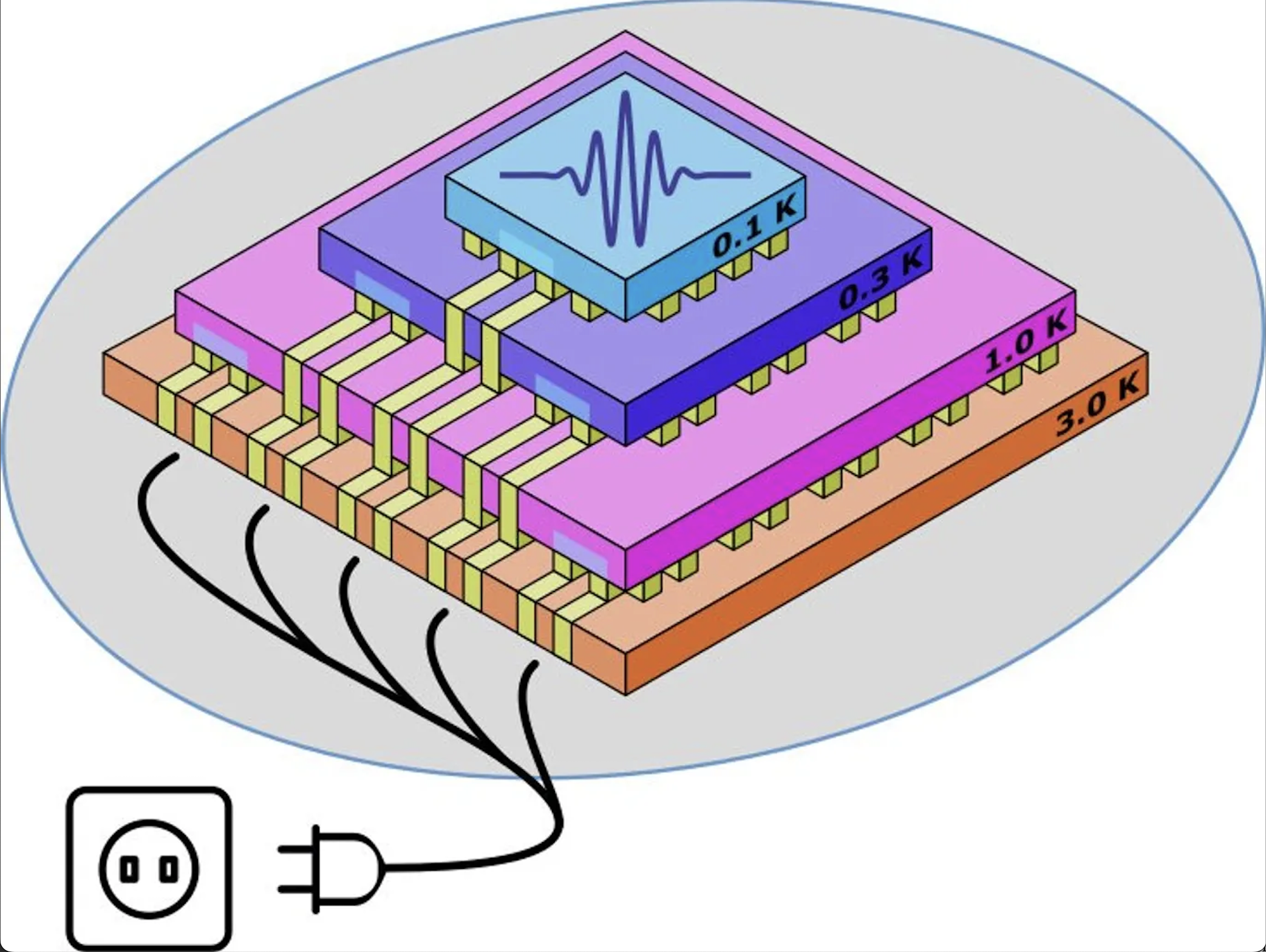Researchers Unlock Chip-Based Thermionic Cooling for Quantum Computers, More
Taking advantage of electron shedding to electronically cool components.

Research from a team at the VTT Technical Research Centre of Finland may point the way toward more sustainable and performant quantum computers. Tthe research team designed a vacuum-tube-like device that allows for cooling to happen in a purely electronic way - a possible road toward slashing cooling costs for dilution-refrigerated quantum computers by a factor of ten. In their experiments, the researchers found their design allowed for temperatures to drop by as much as 40%.
These quantum computers mostly leverage superconducting transmon qubits to perform useful computational work, and have been the qubits of choice for quantum-forward companies such as IBM, Google, Amazon, and others (but not all). But in order for these superconducting qubits to work, they have to be cooled close to the absolute-zero temperature of space (~ 1 Kelvin). The necessity of mixing different helium isotopes to achieve these ideal operating temperatures adds additional layers of complexity.
One of the fundamental limits to any high-level computation is cooling capacity - the ability to draw computationally generated heat away from operating circuits. This particular limit is seen everywhere these days - from the difficulty in cooling 16-core Zen 5 CPUs, to the humongous hunks of fans and metal keeping our GPUs pumping frames, heat is one of the toughest engineering problems in the computing worlds of today, and tomorrow.
But quantum computers are even more sensitive than traditional electronics - they're more prone to outside interference, and are more fickle as to what types of interference can collapse their useful, working qubit states. So new techniques that allow for simpler, more efficient cooling are much in need. While some advances in new cooling techniques have been achieved (such as Frore's AirJet technique), they all mostly work the same way: by channeling a heat-bearing medium (such as water or air) away from the heat source.

But the Finnish scientists at VTT are taking a wholly different road: They developed a thermionic device that sheds heat in the form of electrons (channeling electrons requires energy, which is why thermionic devices taking advantage of the Peltier effect usually introduce yet another energy-consumption step). But crucially, this device allows cooling to be taken almost to its extreme: the researchers expect to be able to cool electronics down to a range between 1.5 K and 0.1 K - more than sufficient to serve as a fundamental cooling mechanism for "absolute-zero" computing. And this technique should be much smaller, less expensive, and less prone to errors from both a logistical and operational standpoint compared to fluid-based cooling.
“Our technology could help the industry scale down overall quantum computer system size,” said Mika Prunnila at the VTT Technical Research Center of Finland, in Espoo.
Fundamentally, heat is caused by the fast movement and subsequent energy-releasing collisions between elementary particles. Quantum computing requires near absolute-zero temperatures for a number of reasons (partly because the superconducting junctions only become superconductive at that temperature, a reflection of the superconducting materials currently available). In absolute-zero temperature environments, elementary particles are slowed down to a crawl. Because they move slower, there are less collisions, which results in both less heat and a more resilient computing state that's also much easier to observe and extract useful information from. It's one thing to try to identify your grandpa when he zips by in a Formula One, but it's much easier to count the hairs on his head when you replace the F1 with a slow-moving tractor.
However, one issue with thermionic coolers is that electron activity isn't the only source of fundamental heat. Other particles, semi-particles, and quasiparticles also interact with one another; and it isn't infrequent that the cooling achieved through electron shedding is lost as a result of other particles (in this case, phonons) "coming back", interacting (colliding) with particles within the previously-cooled material, and heating it up again, in a process known as "backscattering". Crucially, the researchers' thermionic device is able to both direct electrons and block the returning phonons from interacting with (and heating up) the previously cooled surface.
Get Tom's Hardware's best news and in-depth reviews, straight to your inbox.
The researchers' thermionic device works by channeling heat through different mediums at their junction points (where the materials interface with one another). In this case, heat is drawn from the superconductor medium to the semiconductor one, pushing heat away from the most sensitive bits (the ones we want near absolute zero), toward the less sensitive ones. In this way, the cooling effect can be maximized.
It's still early days for the technology, but if quantum computers and classical computers are to keep developing at a useful pace, fundamental breakthroughs in heat management are required. Perhaps the Finnish researchers' thermionic device is the answer, or perhaps not. At the very least, it cuts through some prvious unknowns toward smaller, more capable cooling solutions.

Francisco Pires is a freelance news writer for Tom's Hardware with a soft side for quantum computing.